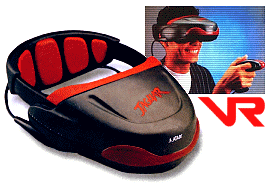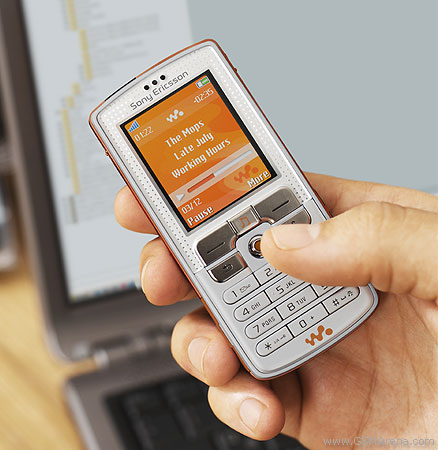

It sounds promising until u realise u it only displays Red and black
Nintendo brought it out 1995 because the Nintendo 64 was a year away
So Nintendo pushed it out It was marketed as the first "portable" video game console capable of displaying "true 3D graphics" out of the box price of around US$180
Nintendo promised that Virtual Boy would "totally immerse players into their own private universe
Gunpei Yokoi, the general manager of Nintendo's R&D1, and the inventor of the Game & Watch and Game Boy handheld consoles. He saw the Virtual Boy as a unique technology that competitors would find difficult to emulate. Additionally, the console was intended to enhance Nintendo's reputation as an innovator.
Yokoi never actually intended for the console to be released in its ultimate form.
Problems emerged when Nintendo attempted to turn its vision into an affordable console, searching for low-cost hardware components. Yokoi opted for red LEDs because they were the cheapest;Nintendo said a color display would have been prohibitively expensive. Color was also said to have caused "jumpy images in tests.
While slightly less expensive than a home console (and significantly less powerful), this was considerably more costly than the Game Boy handheld.
The news described the Virtual Boy as the logical evolution of the View-Master 3-dimensional image viewer
Nintendo portrayed the system as a type of virtual reality, as its name indicates; it was to be more than just another gaming console. Nintendo also focused on the technological aspects of the new console in its press releases, neglecting to detail specific games
Launch titles
Mario's Tennis

is Ok Nintendo shipped Mario's Tennis with every Virtual Boy sold, as a pack-in game but has also been credited as being the game that started up the sports-related sub-series of Mario video games in general as well
Red Alarm,


a wire frame shooter .. Because of the console's limited technology, solid 3D graphics were not viable. it Best Virtual Boy Game of 1995.
Galactic Pinball


Do u really want to play pinball on the Virtual Boy if u can play it on Gameboy It was voted as the fourth best Virtual Boy game of 1995
Teleroboxer


The game is a boxing simulator played in the first person view.
it one of the few games that are really virtual realty
it made the best use of the 3D capabilities of all the Virtual Boy games
reviewers said fun and bitterly hard.
Reviewers would also call it one of the few decent games on the platform
Nintendo Magazine felt that Teleroboxer before release was the weakest of the titles they saw
The Virtual Boy did not live very long following its disappointing sales. The last official title to be released for the Virtual Boy was 3D Tetris, released on March 22, 1996. Nintendo announced additional titles for the system at the Electronic Entertainment Expo in 1996, but these games never saw the light of day The Virtual Boy was discontinued in late 1995 in Japan and in early 1996 in North America. Nintendo killed the system without fanfare, avoiding an official press release
Because Nintendo only shipped 1.26m Virtual Boy units worldwide, it is considered a valuable collector's item.
there were only 22 games ever made for Nintendo's Virtual Boy while 14 were released in North America
Best game to come for the Virtual boy Best game was
Virtual Boy Wario Land
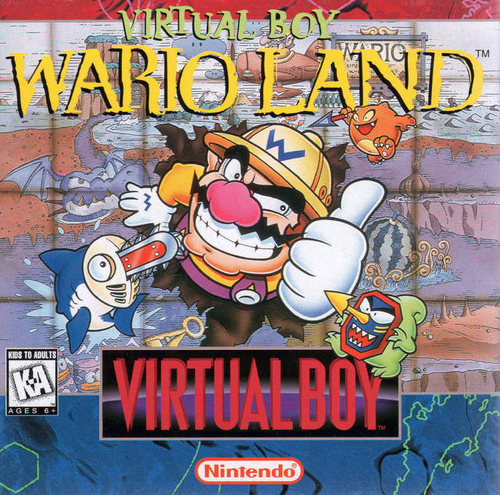
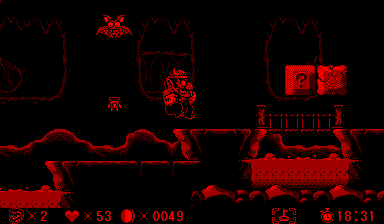
The game tried to incorporate the technology of the Virtual Boy. For example, many stages have more areas located in their backgrounds. With the help of special blocks located in certain places, players can send Wario to these places, which looks unusual given the Virtual Boy's ability to display objects and areas in three dimensions. These visual tricks lend great depth and detail to the game and are repeated more than a few times in situations such as boss fights, where an attack may reach towards the front of the screen, appearing to stop just inches before the player's eyes.
Mikel Reparaz of GamesRadar considered it one of the console's best and a "legitimately awesome platformer Retrogamer 's Damien McFarren felt that while it played like a traditional platformer, the 3D effects made the gameplay feel unique Joel Easley praised its 3D visuals and felt that they demonstrated the Virtual Boy's possibilities GamePro praised it for its sound effects and character sprite quality, calling it the best of the platform
and
Mario clash
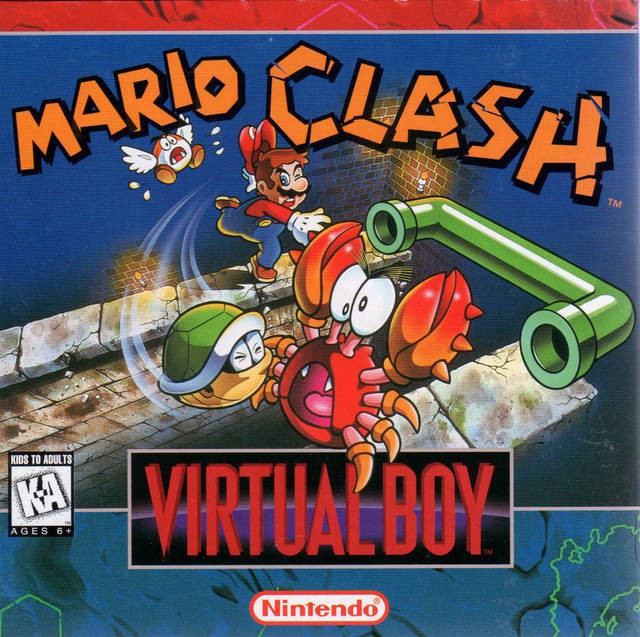

The objective of the game is to knock all the enemies in a particular level off ledges. This is accomplished by jumping on a Koopa Troopa, picking up its shell, and then throwing it at other enemies to defeat them.Levels consist of two planes, a "foreground" and a "background", with lower, middle, and upper floor on each plane, and 4 pipes connecting different combinations of planes and floors. Some enemies can be defeated with Mario throwing a shell at an enemy on the same plane as himself, while others can only be defeated if Mario throws a shell at an enemy into the background from the foreground, or vice versa. The game's sole usable item is a mushroom, which, when touched, initializes "Fever Time", where Mario's shell throwing defeats any enemy it touches, regardless of its defences. The game has 99 levels, although the player can only choose to begin from any of the first forty of them.However, the game does not allow for the saving of progress through the games, or high scores, once the game is turned off.
The controls
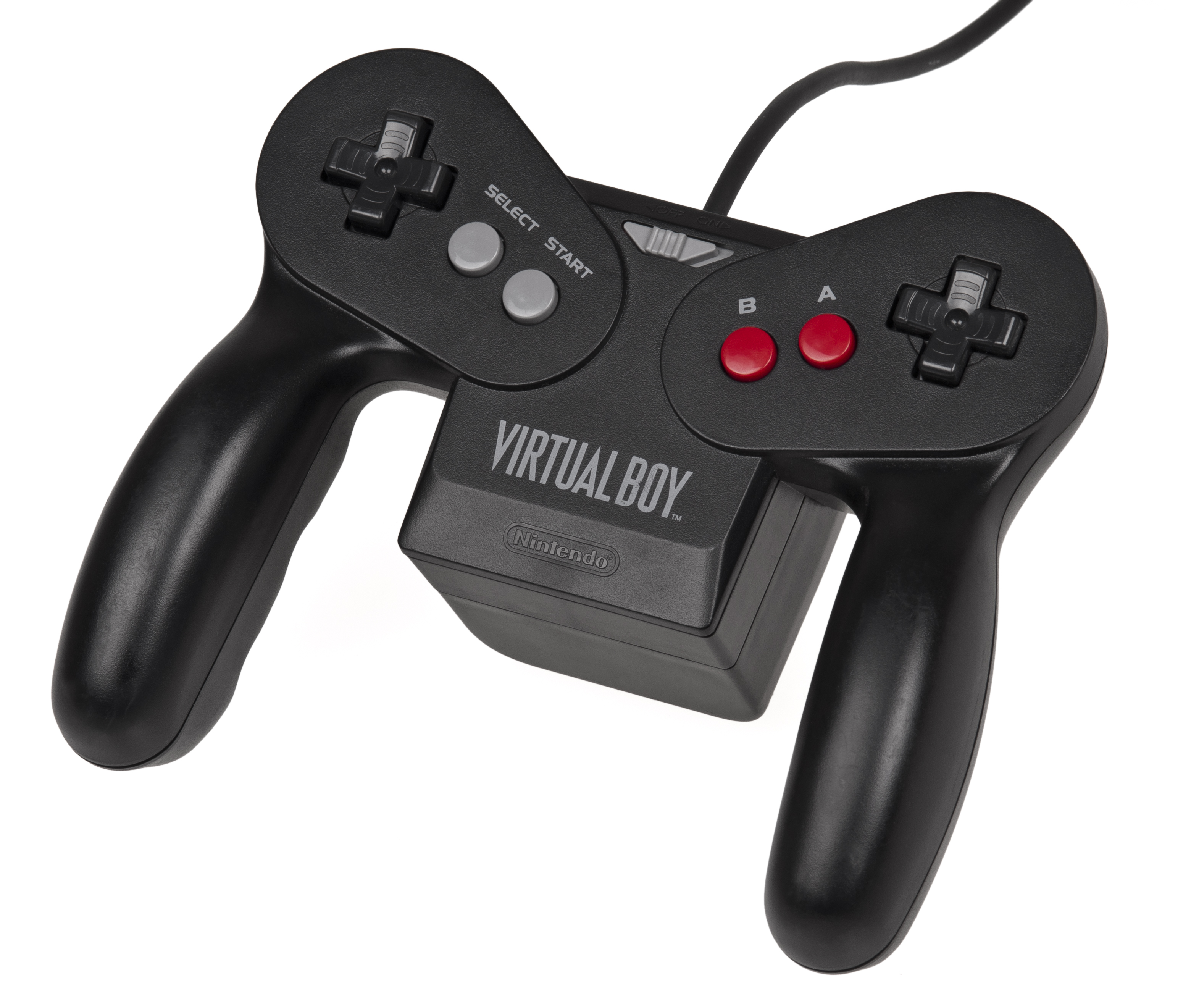
The Virtual Boy, being a system with heavy emphasis on three-dimensional movement, needed a controller that could operate along a Z axis. The Virtual Boy's controller was an attempt to implement dual digital "D-pads" to control elements in the aforementioned 3D environment. The controller itself is shaped like an "M" (similar to a Nintendo 64 controller). One holds onto either side of the controller and the part that dips down in the middle contains the battery pack.
In more traditional 2-dimensional games, the two directional pads are interchangeable.For others with a more 3D environment, like Red Alarm, 3D Tetris, or Teleroboxer, each pad controls a different feature
Problems With the Nintendo's Virtual Boy
1. It was only red and black and has NO COLOUR
2. NO children under the age of 6 could play the system because it could damage there developing eyes
3. It gave people head ache's n warned people to take brakes every 15 to 30 minuets
"dizziness, nausea and headaches
4. uncomfortable ergonomics no strap to strap it to your face u had to sit at a desk to use it
This isn't an official prototype, but the speculation of the graphics designer. This image was shown in the December 1994 issue of 'Super Famicom', a Japanese magazine (this design makes a lot more sense expect for the controls witch only have one d pad not 2 that would make some games more difficult.

5. Absence of head-tracking
Multiple critics lamented the absence of head-tracking in the Virtual Boy hardware. Critics found that, as a result, players were unable to immerse themselves in the game worlds of Virtual Boy games
6. lack of Connectivity
no Launch titles was made with 2 players at mind
an official link cable was to allow multiplayer games but it never came out
Although Waterworld and Faceball the multiplayer features in the former were removed
What Nintendo should have done
should have made Virtual Boy an arcade only until the technology was cheap enough
to make it colour And not rush out a prototype in 1995
or wait until 2002 - 2003 and make it a add on for game cube for under $200-$250
What the competitors were doing in the 1990s
it wasn't the company to experiment with virtual realty in the 1990s
The Sega VR was a head-tracking virtual reality headset under development by Sega
The company claimed to have terminated the project because the virtual reality effect was too realistic (so it was better then ocular rift? well NO). Users might move while wearing the headset and injure themselves. The limited processing power of the system makes this claim unlikely, although there were reports of testers developing headaches and motion sickness (just like Nintendo's Virtual boy). Mark Pesce, who worked on the Sega VR project, says SRI International, a research institute, warned Sega of the 'hazards of prolonged use'

Even Atari devleped Jaguar VR Headset Prototype
it is colour and has head tracking but was cancelled dew to poor sales of the Atari Jaguar
In early 1994, Atari and Virtuality teamed up to make a home-based VR system to work with the Atari Jaguar. They named the project JaguarVR and created two prototypes.
Unfortunately, while Virtuality were under way with their revised model, Atari had plans to exit the video game market following their merger with JT Storage. Virtuality's revamped VR headset for Atari featuring the requested higher display resolution - and what was potentially going to be a must have accessory for Jaguar fans - sadly never hit the market and joined its cancelled low quality predecessor.
Like many unreleased video games and prototype hardware, working examples of the VR Headset for the Atari Jaguar have managed to escape their pending doom into the loving arms of collectors. Both the low and high resolution devices are now in safe hands and make frequent appearances at retro gaming events. Luckily enough for Atari fans, the retail release Missile Command 3D is compatible with this futuristic display, making this prototype so much more than just a collection piece.
The red coloured Atari Jaguar VR Headset, the low resolution version, has since surfaced on eBay for the price of $14,500. While this might be rather steep for such a device, a piece of Atari history is up fro grabs here to any collector with cash to burn.
